Department of Industrial Engineering
4207 Bell Engineering Center
1 University of Arkansas
Fayetteville, AR 72701
Phone: (479) 575-3156
Fax: (479) 575-8431
Capstone 2023-2024
8th Annual Industrial Engineering Capstone Symposium
Arkansas Union Verizon Ballroom, University of Arkansas, Fayetteville
Wednesday, May 1, 2024
Industry Partner and Faculty Recognition Luncheon 11:30 AM – 12:30 PM
Symposium Poster Session and Breakout Presentations 12:30 PM – 4:00 PM
Student Awards Reception 4:15 PM – 4:45 PM
Forecasting Backlog of Cross-Dock Operations using Regression and Machine Learning Algorithms
Presentation Time/Location: 507/508 / 3:15 p.m.
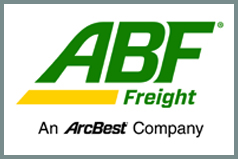
Student Team Leader: Marshal Ray
Other Student Team Members: Maryanne Attee, Jacob Dixon, James Jett and Seth Turner
Industry Partner: ABF Freight
Industry Partner Contacts: Bradley Taylor, Lead Operations Strategy Engineer; Chad Treadaway, Senior Manager, Engineering
ABF Freight, a subsidiary of ArcBest, excels in nationwide less-than-truckload (LTL) shipping, with operations based in Fort Smith, AR. Its vast network includes 10 distribution centers and 240 service centers, handling approximately 20,500 daily shipments in 2023 (8K released in February 2024). ABF Freight is known for providing efficient and cost-effective shipping solutions. However, ABF Freight faces complexities in managing its cross-dock operations due to factors such as equipment availability, labor, freight profiles, and fluctuating demand, which pose logistical challenges at these hubs. We primarily focused on addressing fluctuations in demand. ABF Freight utilizes a metric called Days-To-Current (DTC) to assess how swiftly a station can clear its inventory. Following an analysis of extensive freight data, we explored various regression and machine learning techniques to forecast DTC five days into the future. Subsequently, we developed a Python-based decision support tool incorporating our most successful models. This tool generates a forecasted DTC value for each distribution center for the next five days, empowering ABF Freight to make preemptive adjustments to their network, potentially reducing backlogs, minimizing costs, and optimizing profitability.
Designing a User interface with Excel VBA to Generate Rate Increases for Existing Low-Risk Accounts
Presentation Time/Location: 507/508 / 2:15 p.m.
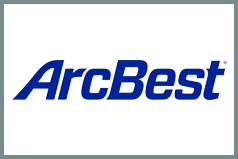
Student Team Leader: Ellen Timmerman
Other Student Team Members: Natalie Hernandez, Kaden Jones and Elias Theodore
Industry Partner: ArcBest
Industry Partner Contacts: Drew Caple, Manager of Pricing and Supply Chain Analytics; Erin Hills, Logistics Engineer II
ArcBest, headquartered in Fort Smith, AR, is a five-billion-dollar integrated logistics corporation with multiple subsidiaries. ABF Freight is by far the largest of their subsidiaries, accounting for over 60% of ArcBest’s annual revenue, and specializes in less-than-truckload shipments. While ABF has standard base rates available to any customer, preferred customers may negotiate personalized pricing structures. Each customer's pricing undergoes an annual review to ensure profitability, with adjustments made based on market changes and cost fluctuations. However, the process of evaluating and adjusting pricing for smaller customers can be disproportionately time-consuming for pricing analysts compared to the revenue generated from those accounts. To address this, we aim to streamline rate increase tasks for smaller accounts by developing a decision-support tool with an intuitive user interface that automatically generates rate increases, considering past account performance. Using the ROMC framework for specialized decision support systems, we created our tool in Excel's VBA. This interface enables analysts to quickly make informed decisions about each rate increase task by assessing an account's historical profitability and predicted negotiation style.
Improving Radiology Productivity by Optimizing Planned Staffing Levels and Supporting Real-Time Adjustments
Presentation Time/Location: 513/514 / 1:15 p.m.
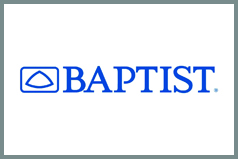
Student Team Leader: Karleigh Eoff
Other Student Team Members: Charles Eason, Weston Harp, Du'Maurier Looney and Joshua Peetoom
Industry Partner: Baptist Memorial Healthcare Corporation
Industry Partner Contacts: Katie Parker, System Director for Human Resources
Headquartered in Memphis, Tennessee, Baptist Memorial Healthcare Corporation (BMHCC) is a network of hospitals and healthcare facilities that serve the Mid-South Region. We are working with BMHCC’s Women’s Hospital’s radiology department in Memphis, TN. The radiology department struggled to meet productivity goals set by BMHCC in the 2023 fiscal year. We are focusing on the staffing of radiology technicians to improve the department's productivity. Currently, there are baseline staff levels for each type of technician (MRI, CT, Ultrasound, and X-Ray) for each day of the week, but these baseline numbers can be adjusted throughout the day by managers if needed. First, we created an optimization model to adjust the baseline staff levels for each type of technician in the department. The model minimizes labor hours of the technicians while meeting demand and labor requirements set by BMHCC. We created a decision support tool to aid in decisions regarding staff levels throughout the day. This tool allows the managers to get an estimate of what productivity is currently and how adjusting the current staff level will affect productivity.
Applying Markov Decision Processes to Optimize Aggregate Workforce Planning with Uncertain Funding Conditions
Presentation Time/Location: 510/511 / 1:15 p.m.
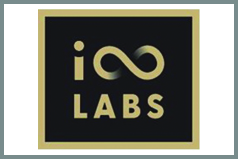
Student Team Leader: Blake Sooter
Other Student Team Members: Katie Augsburger, James Fite, Nathanael Harris and Deniz Vural
Industry Partner: Infinity Labs LLC.
Industry Partner Contacts: Stephen Sieck, Division Lead, Transformational Technologies; David Hillstrom, Ph.D., Simulation Scientist
Founded in 2020 with 7 employees, Infinity Labs is an innovation-focused firm that fosters an entrepreneurial mindset to solve the world’s hardest problems. Located in Dayton, Ohio, Infinity Labs specializes in modeling and simulation work, primarily in the defense sector. Accelerating growth at the company has led to a litany of challenges relating to hiring and staffing, and Infinity desires a more robust quantitative component to their decision-making process for hiring new technical staff. Our team has improved Infinity’s full-time equivalent (FTE) need forecast by better accounting for uncertain inputs using Monte Carlo simulation. We then use this estimate to optimize sequential hiring decisions, which we’ve modeled as a Markov Decision Process. We formulated our model such that the observable state is the gap between actual and needed FTEs at a given step in time, which then prescribes an aggregate hiring action to the decision maker. Our team is developing a decision support tool in Python that will include Excel input/output of project data, the ability to modify assumptions such as the possible hiring decisions, distribution assumptions, discount factor, etc., and the ability to measure changes’ impact on model results.
Delivery Zone Definition with K-Medoids Clustering and Integer Programming
Presentation Time/Location: 510/511 / 2:15 p.m.
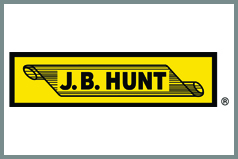
Student Team Leader: Rachel Thomas
Other Student Team Members: Zayna Abu-Safe, Bennett Foret, Trent Sawyer and Luke Smith
Industry Partner: J.B. Hunt
Industry Partner Contacts: Reid Nelson, Manager II, E&T; Brett Phillippe, Sr. Logistics Engineer
J.B. Hunt is a Fortune 500 transportation logistics company that provides shipping and carrier solutions to its customers. With over 35,000 employees, J.B. Hunt has five business units, including Final Mile, who specializes in delivering products to customers via freight. J.B. Hunt Final Mile defines delivery zones for several of its customers to reduce their weekly mileage. A delivery zone is a group of zip codes serviced on specific day(s) of the week. J.B. Hunt Final Mile Engineering’s challenge is that its current process of creating delivery zones is a manual, guess-and-check process that is time-consuming and does not guarantee the best zone definition for reducing route mileage. To address this, we developed a decision-support tool that uses Python to automate and improve the process of creating delivery zones. Using K-Medoids clustering and an integer program, we devised a comprehensive solution to streamline delivery zone creation. We determine the number of zones to create for a customer account, assign zip codes to zones, and assign delivery days to zones. The primary goal is to create zone definitions where workload and daily volume are balanced throughout the week and average weekly miles per stop for customer accounts are reduced.
Allocating Truck Yard Resources and Reducing Bobtail Miles
Presentation Time/Location: 510/511 / 3:15 p.m.
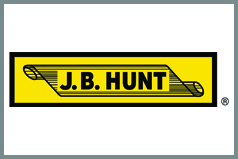
Student Team Leader: Kate Bowden
Other Student Team Members: Hector D. Santillan, Mackenzie Frederick, Riley Baker and Santiago Schrader
Industry Partner: J.B. Hunt Transport Services, Inc.
Industry Partner Contacts: Jake Wofford, Vice President, Intermodal Operations; Trevor Rogers, Director II, Operations and Brandon Workman, Logistics Engineer II, West Dray Operations
J.B. Hunt Transport Services, Inc., a Fortune 500 company headquartered in Lowell, Arkansas, provides trucking and logistics services across five business units. The Intermodal business unit utilizes a network of five truck yards and the BNSF Railway to deliver freight in the Los Angeles, California, region. J.B. Hunt is concerned that they are driving too many "bobtail" miles, which occurs when there is no trailing equipment attached to the cab of a truck. Bobtailing typically occurs at the beginning and end of a driver's shift, driving between a truck yard and a rail yard. J.B. Hunt recently purchased two new truck yards in Los Angeles and believes the properties' proximity to the rail yards can decrease bobtailing. We developed an optimization model that minimized bobtailing by assigning trucks to yards, giving us a baseline recommendation for the resource allocation at the new truck yards. For the remaining space at the truck yards, we created a VBA decision support tool allowing users to rank the relative importance of dedicating space for trucks, trailers, containers, and office space at each new yard. The tool performs a multiple objective decision analysis, outputting the recommended amount of equipment to store at each yard.
Improving Table-Pack Work Cell Efficiency using Intrinsic Motivation and Lean Manufacturing Principles
Presentation Time/Location: 513/514 / 2:15 p.m.
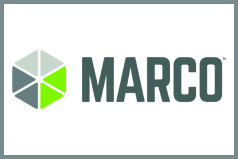
Student Team Leader: Gabe Hesington
Other Student Team Members: Joshua Jowers, Caleb Morris and Mitchell Cooksey
Industry Partner: Marco Group, Inc.
Industry Partner Contacts: Richard Davidson, Chief Executive Officer, Co-Founder
Marco Group, Inc. is a manufacturer of classroom furniture that is headquartered in Neosho, MO. They employ about 65 people and generate around $20 million in annual revenue. Marco uses cellular manufacturing to produce a wide array of desks and tables, while outsourcing production of chairs and storage carts. The last work cell that all tables go through is called Table-Pack, where each tabletop is inspected, cleaned, given support braces if needed, and packaged. We discovered that Table-Pack’s performance was substantially lower than Marco’s standardized goals. We attributed this to several factors including lack of standard practices, Parkinson’s law, and a lack of employee motivation. We have outlined a series of standard practices using Standard Operating Procedures (SOP) documentation. These documents outline safe work standards covering cell layout, work instructions, and lean manufacturing techniques. These documents lay a foundation for improved process observation and future improvements. To address Parkinson’s law and employee motivation, we built an Operator Dashboard that gives workload visibility and specific goals to the Table-Pack operators. The goal of the dashboard is to give operators intrinsic motivation which, based on our research, increases productivity.
Improving Chicken Breast Production Scheduling through Pareto Optimization with VB.NET
Presentation Time/Location: 513/514 / 3:15 p.m.

Student Team Leader: Addison Standridge
Other Student Team Members: Carter Baldwin, Kevin Connelly and Joshua Smith
Industry Partner: Simmons Prepared Foods
Industry Partner Contacts: Turner Vance, Director Continuous Improvement; Ross Vandever, VP Continuous Improvement; Kerry Bartholomew, Senior Continuous Improvement Manager
Headquartered in Siloam Springs, Arkansas, Simmons Foods, Inc. and its associated enterprises are primary providers of poultry, pet, and animal nutrition items. Simmons Prepared Foods ranks among the top 15 poultry producers in the United States and operates as a division of Simmons Foods within the foodservice industry. A variety of people, starting with the sales team all the way to the plant manager, give different inputs to generate a customer order schedule. This schedule begins with forecasts from the sales team and then each plant scheduler generates a schedule with these inputs for their respective facility based on long-term employee knowledge. Currently, there is no process during schedule building that incorporates the minimization of waste of value-added product, or trim. Our primary goal is to use multi-objective optimization to improve the production schedule for chicken breasts at Simmons’ Van Buren facility with an aim to enhance the output of value-added product while simultaneously reducing the tardiness of customer orders. We designed a Microsoft Excel Add-In tool using Microsoft Visual Basic .NET framework that allows Simmons to choose from multiple solutions on a Pareto frontier. This increases the flexibility of the scheduler’s decision, speeds up the time to generate a schedule, and incorporates trim reduction into the schedule building process.
Enhancing Automation Decisions using Power BI Analysis and Linear Programming
Presentation Time/Location: 507/508 / 1:15 p.m.
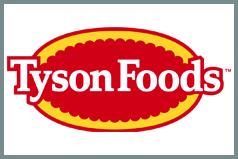
Student Team Leader: Lathan Gregg
Other Student Team Members: Ashwin Narayan, Austin Easley, Seth Rosenfeld and Sebastian Alborta
Industry Partner: Tyson Foods
Industry Partner Contacts: Maria Rene Arandia, Automation Analyst; Irving Polanco, Senior Automation & Robotics Engineer; Sean Lawrence, Senior Manager Automation
Tyson Foods, headquartered in Springdale, Arkansas, is a Fortune 100 multinational protein corporation serving consumers on five continents. Tyson divides their operations into three business units: Poultry, Prepared Foods, and Fresh Meats. Tyson’s automation team works across all three units to deliver automated solutions, helping reduce costs and eliminate ergonomic risks. Automation engineers analyze end of line data collected inside facilities to understand the volume and variety of products handled. At Fresh Meats facilities, non-uniform and decentralized data complicates this process, resulting in a tedious and incomprehensive ad hoc analysis. Our project goal was to streamline this process while providing a more complete analysis of facility data. To accomplish this, we created an ingestion process to load then structure data, and an interactive Power BI dashboard to support the comprehensive examination of a facility’s performance. To supplement this tool, we created a linear program to prescribe an optimal combination of palletizer options to implement at a facility.